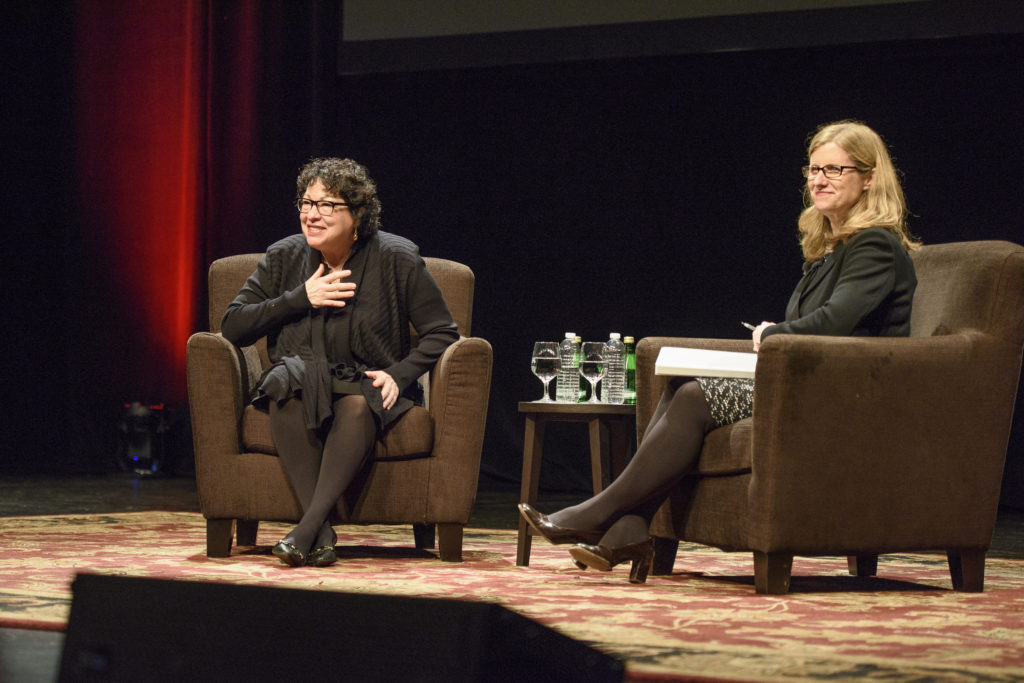SLS Students and Faculty Offered Unique Opportunity to Meet Supreme Court Justice
Justice Sotomayor visited the law school before her university-wide talk at Memorial Auditorium
On March 10, Stanford Law School hosted Associate Justice Sonia Sotomayor where she spent the first part of the day meeting in small groups with students and faculty, before speaking to a packed audience of students, faculty, and staff at Memorial Auditorium, in a conversation with Dean M. Elizabeth Magill. Stanford University President Marc Tessier-Lavigne introduced Justice Sotomayor in an event presented by the Office of the President, the senior class presidents for the Class of 2017, and Stanford Law School.
“We were thrilled to have hosted Justice Sotomayor. Her presence was incredibly powerful,” said Dean Magill. “Her wisdom and warmth created a unique and memorable experience, one I know this community will long remember.”
Elena Alejandra Mercado, JD ‘18 was one of 25 Stanford Law student leaders who met with Sotomayor, which Mercado said was “beyond inspiring.” After meeting with SLS students, Sotomayor attended a luncheon with Stanford Law faculty in the William H. Neukom building. “Those of us fortunate enough to enjoy lunch with the Justice were so impressed with her intellect, her sense of humor, her passion, and her compassion,” said Deborah A. Sivas, the Luke W. Cole Professor of Environmental Law. “She clearly cares about getting the law right, but it is equally clear that she also worries about actual impacts on the very real human beings who are behind every case the Court decides.”

At Memorial Auditorium in the afternoon, Sotomayor spoke about her role on the U.S. Supreme Court and how her professional background shapes her work as an Associate Justice. Sotomayor remarked “I’m known for asking a lot of questions about the record in the case, I think that is very much a product of my extensive trial experience, and the fact that I was a trial judge. As a result of that experience, I believe that the law should be incrementally grown.” She went on to say, “In the long run, the society is better served with a ruling that looks at the outcome long term and where it leads us. For me, it’s finding that balance, always informed by being a judge that dealt with people and understanding and never losing sight that laws do affect people first and foremost.”
Weaving through the audience, Sotomayor fielded questions from students; her responses stressed the importance of staying open, curious, and bold—lessons she learned on her path to the U.S. Supreme Court. Said Mercado, “no moment was as special to me as when Justice Sotomayor remarked, ‘And if someone is impressed by your education—you let them know it’s because you’re smart, and not just because of affirmative action.’”
Savannah Fletcher, JD/MS ‘18, was one of the students selected to pose a question to the Justice. “As a leader of Stanford’s Native American Law Student Association, it was especially empowering to ask her about her view of Federal Indian law and the role of diversity in informing the law,” Fletcher said. “Justice Sotomayor’s response to my question was comforting while also a call for aspiring lawyers and advocates to actually visit and seek to understand the many communities we hope to serve.”
